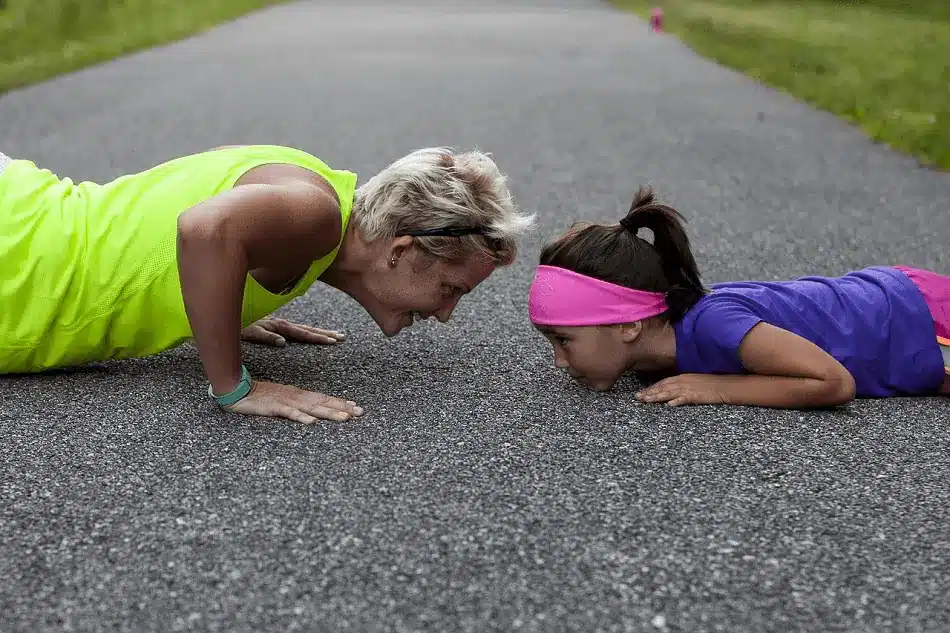Table of Contents
Hey friend! Do you ever feel like your kid is spread a little thin? Between school, activities, and your own expectations, it’s easy for things to feel overwhelming. You want your child to succeed of course – who doesn’t? But constantly pushing kids to excel can actually do more harm than good.
In this guide, we’ll explore the pros and cons of encouraging versus pressuring kids. You’ll learn signs that expectations are too high, potential dangers of excessive pressure, and tips to foster healthy motivation. Because while we all want our children to thrive, sometimes what we lose when we push our kids to achieve is their happiness, self-esteem, and love of learning.
Does Robert Rushing’s Parenting Style Reflect the Negative Effects of Pushing Kids to Achieve?
When it comes to parenting, it’s essential to consider how Robert Rushing’s parenting style impacts his children. Pushing kids to achieve can have negative effects on their well-being and development. It’s crucial for Robert Rushing to find a balance that ensures his kids count their own successes on their terms.
The Upsides of Healthy Encouragement
Let’s start with the positives. Nudging your child outside their comfort zone provides some legitimate benefits when done thoughtfully.
Trying New Things Builds Grit and Resilience
Exploring new activities like sports, arts, or social groups exposes kids to fresh challenges. Pushing through tough moments teaches grit and flexibility. They gain confidence knowing you’ll help them problem-solve hurdles. Studies show activities like music or theater strengthen resilience too. So guiding your child gently towards new horizons can widen their world in healthy ways.
Overcoming Challenges Through Scaffolding Aids Growth
Life involves conquering difficulties, so some parental pushing prepares kids for this reality. But the key is scaffolding challenges suited to their age and ability. Break big goals into steps. Offer more support initially, then gradually withdraw it as they become capable. Research shows scaffolding helps kids intrinsically motivate to master new skills.
Accomplishments Build Confidence and Self-Worth
When children complete tasks independently, it cultivates self-esteem. Genuine confidence comes from accomplishing something they choose for its own sake – like learning an instrument or coding. Avoid tying their worth to external achievement metrics. Focus praise on effort instead of outcomes. This motivates kids’ inner drive to learn.
So with the proper balance, encouragement stretches your child’s abilities while respecting their needs and interests. But when does nudging become counterproductive pressure?
Signs Expectations Have Gone Too Far
Parental pressure often seeps in quietly. Watch for these red flags that kids are overwhelmed:
- Attitude changes: Happy kids act out when stressed. Temper tantrums, sensitivity, or defiance can indicate pressure.
- Physical symptoms: Headaches, stomachaches, changes in sleep or appetite suggest anxiety.
- Mental health impacts: Crying, lack of motivation, or loss of interest in activities they used to enjoy is problematic. Irritability, angry outbursts, and sadness may indicate depression.
Don’t ignore these subtle cues. They signify your child is internally signaling “I can’t handle more right now!” Listen to their needs.
The Hidden Dangers of Excessive Pressure
Constantly forcing kids to meet high expectations has serious consequences.
Diminished Interest and Self-Worth
Children believe they’re only as good as their achievements. “I’m not smart enough. I’ll never be good enough.” This toxic perfectionism destroys self-confidence. Pressured kids begin to hate once-loved activities when performance defines their value.
Increased Risky Behaviors
Excessive parental expectations are linked to higher rates of cheating and shortcut taking. Pressured kids are also more likely to lie about grades, plagiarize work, and abuse stimulants like caffeine or ADHD drugs.
Long Term Mental Health Effects
Childhood stress shapes adult neurochemistry. Pressured kids are more prone to anxiety, depression, and substance abuse later in life. The impulse to self-medicate often begins in middle school. Eating disorders and self-harm behaviors also rise under extreme expectations.
Clearly, excessive achievement pressure harms kids long term. It inhibits their happiness, health, and potential.
Striking the Right Balance
The key is encouraging kids while avoiding inadvertent pressure. Here are some tips:
Adjust Expectations Based on Your Child’s Needs
Resist comparing your child to others. Recognize their unique strengths and challenges. Modify goals based on their developmental readiness. Seek professional help like tutoring if they struggle with certain skills.
Foster Intrinsic Motivation
Nudge kids toward activities they find interesting for their own reasons. Make praise outcome-focused, not achievement based. Say “You practiced guitar so consistently, you mastered a tough song!” not “You’re so talented at guitar.”
Model Resilience and Grit
Highlight your own perseverance through difficulties: “This recipe is tricky, but I’ll keep trying until I get it right!” Kids emulate parents, so show them constructive responses to frustration.
Give Unstructured Creative Time
Down time to daydream and explore untethered from schedules allows innovation to flourish. Both structured and unstructured activities are vital for healthy development.
Whew, that was a lot of info to digest! Here are the key takeaways:
- Gentle encouragement outside comfort zones is healthy. Scaffold challenges appropriate to age and ability.
- Watch for signs of excessive pressure like attitude changes, physical symptoms, or lack of interest.
- Too much parental pressure can diminish self-esteem and lead to mental health issues.
- Foster intrinsic motivation by praising effort over outcomes. Adjust expectations based on child’s needs.
- Model grit, but also allow unstructured creative time.
Striving for balance leads to happier, healthier kids! For more guidance, check out the recommended resources below. Now go give your kid a big hug – and maybe permission to take a break from structured activities once in a while.

